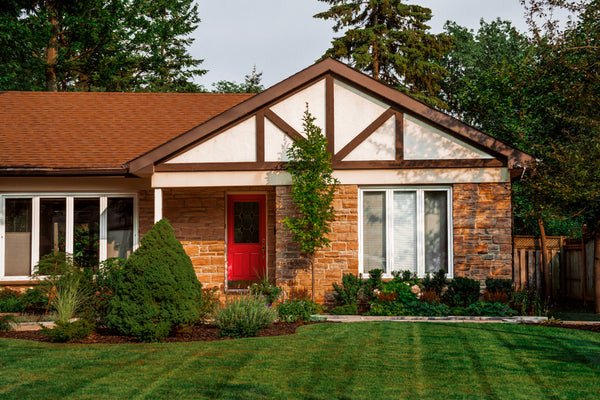
The artificial turf drainage is generally in the form of seepage, and the underground water seepage system is closely combined with the structure of the site, and most of them are in the form of blind ditch (an underground drainage channel). The drainage slope of the ground of the artificial turf is controlled to be 0.3%~0.8%, the slope of the artificial turf site without water seepage function is not more than 0.8%, the slope of the artificial turf site with water seepage function is 0.3%, and the drainage ditch of the outdoor site is generally not Less than 400mm.
Construction process:
1. The falling water and rapid flow trough must be constructed with a slurry structure. The height of the step can be determined according to the topography and geology. The height of each step can be different. The height to length ratio should be compatible with the original ground slope. The height of the step is generally not more than 0.5~0.6m, generally 0.3~0.4m.
2. The falling water can be poured with masonry stone or cement concrete. The thickness of the side wall of the groove wall and the stilling pool is 0.25~0.4m for the masonry stone and 0.2m for the concrete. The height should be higher than the calculated water level by at least 0.2m. The bottom of the groove has a thickness of 0.25~0.4m, and the outlet is provided with a water barrier wall.
3. The water drop is generally equipped with a force-reducing 槛. When set, the top width of the raft is not less than 0.4m, and there is a drain hole with a size of 5cm*5cm~10cm*10cm, so that when the water is interrupted, the water in the stilling pool is excluded. .
4. The falling tank is generally built into a rectangular shape, but the height of the falling water is not large, and the longitudinal slope of the bottom of the trough is slow. It is also possible to adopt a trapezoidal cross-section. The trapezoidal falling tank body should be 0.5~1.0m before the step and 1.0~1.5 after the step. Reinforcement within the m range.
5. The longitudinal slope of the rapid flow trough should not exceed 1:1.5, and it can be used for masonry or concrete pouring.
6. In order to prevent slippage, an anti-skid platform can be built on the slope jet trough to prevent slippage.
7. The bottom of the water inlet and the bottom of the water tank should be paved with slabs of stone. The grouting of the cement slurry should be no less than 10m in length. In some cases, it should be laid in the downstream with a thickness of 0.2~0.5m and 2.5m.
8. When the rapid flow channel is very long, it should be built in sections. The length of each section should not exceed 10m. The joints are filled with waterproof material and there is no gap.
9. The rapid flow trough should be roughened or embedded in a rock block of about 10cm*10cm to reduce the flow rate.
10. For the steep slope of the roadside slope with large catchment area, it should be considered to increase the size of the deep-flow channel and introduce the roadbed drainage system after the energy-saving facilities are installed at the bottom.





